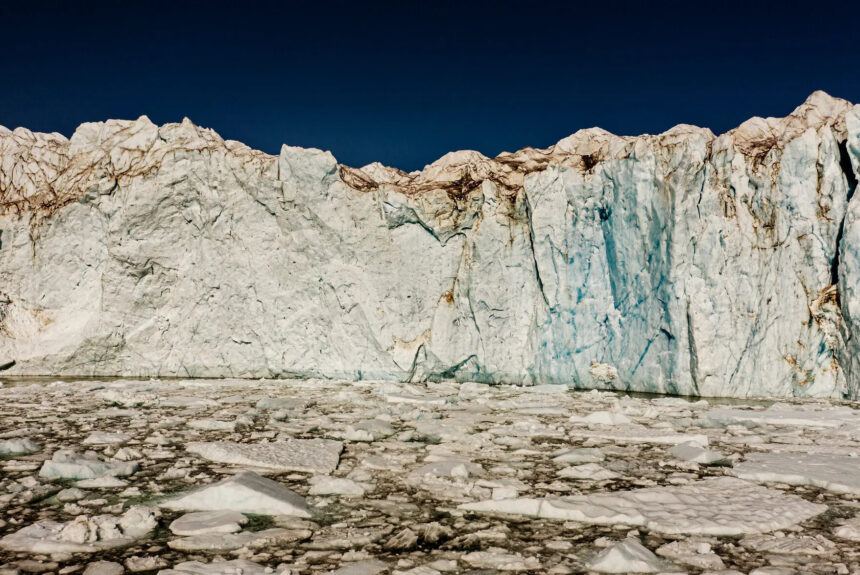People scoffed at President Trump in 2019 when he said he wanted to purchase Greenland from Denmark. However, as current US energy challenges persist, trying to buy the world’s largest island, with its abundant deposits of rare earth elements (REEs) essential to alternative forms of energy doesn’t seem like such a bad idea anymore. As China and other nations attempt to gain a foothold on the island, the U.S. should work with Greenland and Denmark to secure these deposits to consolidate Western energy security and prevent hostile control of the world’s REEs.
>>>READ: Look Beyond China for Sustainable Rare Earth Elements
Most alternative energy sources, whether it’s wind turbines, solar panels, or lithium batteries rely on REEs to function. Even producing oil from fracking takes REEs. And Greenland has a lot of these.
As crazy as it sounded in 2019, buying Greenland would have been the modern-day equivalent of “Seward’s Icebox” — when President Andrew Johnson’s Secretary of State, William Seward, purchased Alaska from Imperial Russia in 1867. The move was initially lampooned by some as a ridiculous waste of taxpayers’ money. In time, however, it has come to be seen as an irrefutable strategic victory. Alaska’s oil and gas production helped generate $19.4 billion towards the state’s GDP in 2019 and undergirds America’s position as a net exporter of natural gas.
Greenland is the new Alaska. The island’s deposits of neodymium and dysprosium for wind turbines and advanced electronics will be the materials that determine not just renewable energy’s relevance, but also the ability of the U.S. to defend itself, as other REEs are crucial components in missile defense systems and cutting-edge encrypted communications systems. Yet, China is far ahead of the U.S. in recognizing Greenland’s strategic value. That’s bad news, as the Red Dragon already controls 85% of global REE processing.
China has made several attempts to establish a presence in Greenland and has partnered with several mining corporations to gain access to REEs. In 2016, a company linked to the Chinese Communist Party attempted to purchase an abandoned naval station originally built by the U.S. during the Cold War. The sale was only halted by a last-minute effort by former Danish Prime Minister Lars Lokke Rasmussen. While Greenland has the ability to make its own trade agreements and other aspects of home rule, Denmark handles its defense and foreign policy. This unique situation has allowed China to attempt to woo Greenlanders with investments. In 2018, Denmark hurried to counter a Chinese state-owned company’s offer of investment to upgrade the island’s airports. Expect China to continue to try and buy its way into Greenland
China has had some success in accessing mines in Greenland, due to its strategic partnerships with other companies. Greenland Minerals, an Australian mining company, has purchased the Kvanefjeld deposit, which has been projected to contain billions of tons of dense REEs and uranium. Greenland Minerals’ largest shareholder is a Chinese company, Shenghe Resources, that already owns a 12% stake in the Kvanefjeld deposit.
General Nice, another Chinese firm, acquired control of the Isua iron-ore mine in 2015 and became the first Chinese firm to be licensed to exploit minerals in Greenland. Thankfully, that license was recently revoked due to the firm’s failure to make payments and develop the site under a new Greenland government that is more suspicious of mining projects. The government’s ban on uranium mining also halts the development of the Kuannersuit mine, which is also partly owned by a Chinese company. This creates the perfect opportunity for the U.S. to build on a 2019 agreement that saw Denmark, Greenland, and the U.S. jointly fund a U.S. military aerial survey to map out Greenland’s mineral resources.
>>>READ: How Policymakers Can Boost Domestic Energy Security
The stakes are high for the United States. Breaking Chinese control of REE mining and processing will ensure the U.S. has the resources needed for crucial components of innovative technologies. The U.S. already has deep ties with Greenland; the Thule Air Base is one of the U.S.’s most important installations for missile defense and space monitoring. Programs through the U.S. State Department have received funding to help train experts, academics, and workers in Greenland’s mining sector, while Greenland’s potential to become a fully independent country would open avenues for military partnerships with the U.S.
Several U.S. companies have begun to rebuild the U.S.’s domestic REE industry, but a diversified supply chain will ensure a more secure supply. One of the few REE processors outside China, Toronto-based Neo Performance Materials, recently bought exploration rights to mine in Greenland. The U.S. risks being left out in the cold as enemies like China recognize Greenland’s massive potential to be a secure source of tomorrow’s technological components. Our allies also need these crucial minerals for their own arsenals and innovative technologies. Working with our domestic industry, Greenland’s government, and Denmark to deepen U.S. collaboration and development in Greenland will ensure tomorrow’s technologies can be produced at home. Without a secure mineral supply chain, tomorrow’s innovations will be stuck on the drawing board.
Roy Mathews is an Innovation Fellow at Young Voices. He is a graduate of Bates College and former J. William Fulbright Fellow. He has been published in NRO, Law & Liberty, and The National Interest.
The views and opinions expressed are those of the author’s and do not necessarily reflect the official policy or position of C3.
